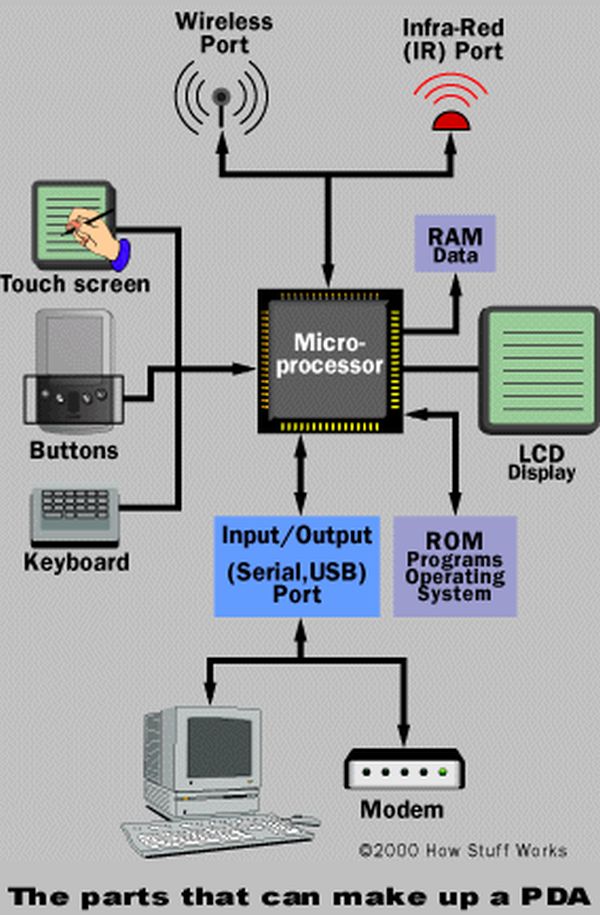Types of PDAs
Traditional PDAs
Today’s traditional PDAs are descendents of the original PalmPilot and Microsoft Handheld PC devices. Palm devices run the Palm OS (operating system), and Microsoft Pocket PCs run Windows Mobile. The differences between the two systems are fewer than in the past.
Palm PDAs
Most Palm devices are made by palmOne, which offers the Zire and Tungsten product lines. The company formed in 2003 when Palm Computing acquired Handspring, Inc. Sony, which produced the Palm-based CLIE, stopped producing PDAs in 2005.
Known for their ease of use, Palm OS PDAs have:
- A vast library of third-party applications (more than 20,000) that you can add to the system (most devices come bundled with e-mail, productivity and multimedia software)
- An updated version of the Graffiti handwriting-recognition application
- Synchronization with both Windows and Macintosh computers using the Palm Desktop
- Smaller displays than Pocket PCs to accommodate a dedicated Graffiti area on the device (Some higher-end Palm devices now incorporate a virtual Graffiti area in the display, resulting in a larger display area.)
Pocket PCs
Pocket PC is the generic name for Windows Mobile PDAs. Their standard features include:
- Pocket versions of Microsoft applications such as Microsoft Word, Excel, and Outlook (note that some formatting is lost between Pocket and standard versions of documents)
- Synchronization with Microsoft Outlook on a Windows PC (synchronization with e-mail systems other than Outlook or with Macintosh computers requires additional software)
- Three handwriting-recognition applications: Transcriber, Letter Recognizer (similar to the new version of Graffiti), and Block Recognizer (similar to the original Graffiti)
- A virtual writing area, which maximizes the display size
- Windows Media Player for multimedia content
Smartphones
A smartphone is either a cell phone with PDA capabilities or a traditional PDA with added cell phone capabilities, depending on the form factor (style) and manufacturer. Characteristics of these devices include:
- A cellular service provider to handle phone service (As with cell phones, you typically purchase a cellular plan and smart phone from the service provider.)
- Internet access through cellular data networks
- Various combinations of cell phone and PDA features, depending on the device (for example, not all smart phones offer handwriting-recognition capabilities)
- A number of different operating systems, including Windows Mobile Pocket PC Phone Edition, the Palm OS, the Blackberry OS for Blackberry smart phones, and the Symbian OS for smart phones from Panasonic, Nokia, Samsung and others.
Well, it doesn’t look like a PDA…
Related devices include ultraportable computers, smart watches and multimedia players. Ultraportable computers range in weight from less than a pound to about three pounds, come with a full desktop operating system (such as Windows XP), and include a small keyboard. Smart watches offer some PDA functions in a wristwatch form factor. Microsoft’s SPOT (Smart Personal Objects Technology)-based watches, for example, can receive MSN Direct information such as weather and news. They can also receive calendar information and personal messages. Some multimedia players can combine the functions of a PDA with multimedia features, such as a digital camera, an MP3 player and a video player.
For more detail: How PDAs Work

